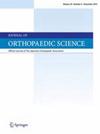股骨假体周围骨折后再次手术的预测因素:一项多中心(TRON)回顾性研究
IF 1.5
4区 医学
Q3 ORTHOPEDICS
引用次数: 0
摘要
背景股骨假体周围骨折(PFF)的手术治疗对技术要求很高,并发症和再次手术的发生率也很高。然而,重复手术并不常见,很少有研究对股骨假体周围骨折手术治疗后再次手术的存活率和功能预后进行研究。我们的目的是在一项多中心(TRON 组)研究中估算因任何原因再次手术的比例,确定 PFF 再次手术后的存活率,并找出与 PFF 手术后再次手术相关的预测因素。在排除了保守治疗的患者和温哥华A型骨折患者后,我们对184名患者进行了分析。我们计算了未经调整的风险比(RRs),并使用多元逻辑回归计算了调整后的风险比。我们使用 Kaplan-Meier 法绘制了生存曲线,并使用对数秩检验确定了自再次手术之日起的生存率。PFF再次手术后的1年存活率为66.7%(15例中有11例)。温哥华 B3 和温哥华 C 被确定为 PFF 手术后再次手术的独立风险因素(温哥华 B3:风险比 [RR]19.0,95 % CI 1.10-329 P < 0.001;温哥华 C:RR 13.3,95 % CI 1.4-123.0,P = 0.023)。骨折类型与 PFF 手术后再次手术有关。本文章由计算机程序翻译,如有差异,请以英文原文为准。
Predictive factors for reoperation after periprosthetic femoral fracture: A retrospective multicenter (TRON) study
Background
The surgical treatment of periprosthetic femoral fracture (PFF) can be technically demanding and it is associated with high rates of complications and repeat surgery. However, repeat surgery is uncommon and few studies have examined survival and the functional prognosis following reoperation after the surgical treatment of PFF. We aimed to estimate the rate of reoperation for any reason, to determine the survival rate after reoperation for PFF, and to identify predictors associated with reoperation after PFF surgery in a multicenter (TRON group) study.
Methods
Two hundred forty-six patients were admitted for treatment of PFF. After excluding patients managed conservatively and those with Vancouver type A fracture, we analyzed 184 patients. Unadjusted risk ratios (RRs) were calculated, and multiple logistic regression was used to calculate adjusted RRs. We used the Kaplan-Meier method to create survival curves and a log-rank test to determine survival from the date of repeat surgery.
Results
Fifteen of the 184 patients (8.2 %) underwent reoperation after PFF surgery. The 1-year survival rate after reoperation for PFF was 66.7 % (11 of 15). Vancouver B3 and Vancouver C were identified as independent risk factors for reoperation after PFF surgery (Vancouver B3: Risk ratio [RR] 19.0, 95 % CI 1.10–329 P < 0.001; Vancouver C: RR 13.3, 95 % CI 1.4–123.0, P = 0.023).
Conclusion
The reoperation rate after PFF surgery and the mortality after reoperation PFF surgery were relatively high. The fracture type is associated with reoperation after PFF surgery.
求助全文
通过发布文献求助,成功后即可免费获取论文全文。
去求助
来源期刊

Journal of Orthopaedic Science
医学-整形外科
CiteScore
3.00
自引率
0.00%
发文量
290
审稿时长
90 days
期刊介绍:
The Journal of Orthopaedic Science is the official peer-reviewed journal of the Japanese Orthopaedic Association. The journal publishes the latest researches and topical debates in all fields of clinical and experimental orthopaedics, including musculoskeletal medicine, sports medicine, locomotive syndrome, trauma, paediatrics, oncology and biomaterials, as well as basic researches.
 求助内容:
求助内容: 应助结果提醒方式:
应助结果提醒方式:


